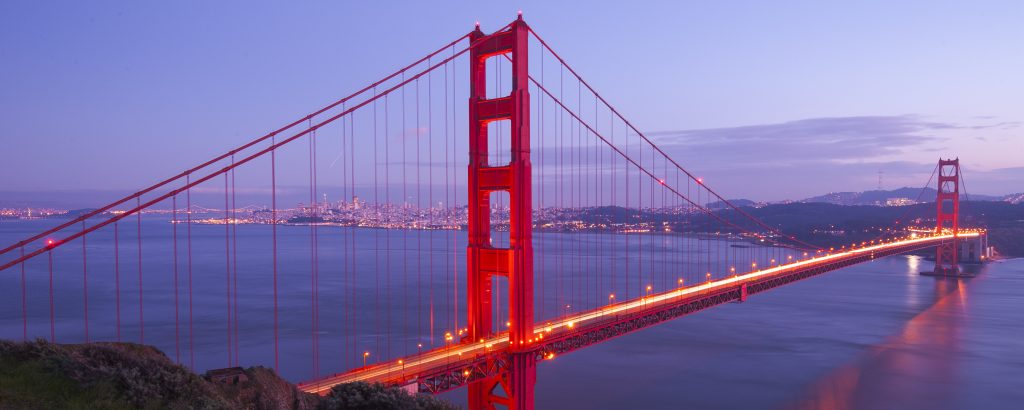This story opens in Pottstown in 1933 on South Washington Street about 6:30 in the morning. Here they come: a stream of workers from all over Pottstown, hundreds and hundreds of them. You can hear their voices and the sound of their work boots hitting the pavement as they walk — very few people had cars in those days — to the Bethlehem Steel grounds to clock in for the beginning of their day.
Within the year, most of these men will begin working on a project that will take up the next three years or more of their lives: the fabrication of the steel parts that will go into building the Golden Gate Bridge, one the marvels of American engineering.
All this work in an East Coast steel yard was made possible by the need of a West Coast city, San Francisco. To continue to grow and prosper, that city needed to bridge the Golden Gate Strait and connect with areas to the north and west.
The 200-foot-deep strait, a mile-wide stretch of rapid currents and rough water where San Francisco Bay empties into the Pacific Ocean, was a stiff engineering problem that was finally solved by Joseph Strauss, a well-known bridge designer.
On Nov. 4, 1930, despite the economic woes of the Great Depression, voters in the six-county Golden Gate Bridge District voted almost four to one to put up their homes, farms and businesses as collateral for a $35 million bond issue to finance the construction of the bridge.
The McClintic-Marshall Co., a subsidiary of Bethlehem Steel Corp., bid $10,494,000 for the contract to build the steel superstructure. Of course, because McClintic-Marshall was located in Pottstown, the outcome of this bid was of enormous importance for the entire area. The contract would mean almost 1,000 jobs for area workers for at least three years.
Area residents waited anxiously while the steel company and the Golden Gate Bridge Commission negotiated several items. On Jan. 12, 1933, anxiety gave way to joy as The Pottstown Mercury announced “M’CLINTIC’S BIG CONTRACT TO BE SIGNED TODAY.”
The article continued, “The Golden Gate bridge contract, which has been hanging fire for more than a year and a half (will) provide work for most of the employees in the
(works) over a period of almost two years.”
That same day it was rumored that a large part of this work would be done by McClintic-Marshall’s newly refurbished plant in Alameda, Calif. But on the following day — which just happened to be Friday the 13th — The Mercury again boosted everyone’s spirits, “LOCAL PLANT TO GET MOST OF BRIDGE JOB.”
The key word in that headline is “most.” In total, 41,800 tons of the 100,000 tons of steel which went into the project, slightly less than half, were fabricated in Pottstown. The remainder of the work was done at four or five of Bethlehem Steel’s other plants, including Steelton and Sparrow’s Point.
Pottstown, it would seem, quickly went to work on the bridge as the first steel, the anchors for the pier on the Marin side, was shipped Feb. 28, 1933.
Work on the superstructure continued off and on in the Pottstown plant over the next three years. In the drawing rooms the draftsmen created the plans. Workers in the template shop used them to create cardboard templates. The men in the shops used the templates to create the parts, which were then rolled out into the yard and painted. Later the girders, columns, angles and other pieces were loaded by cranes onto railroad cars and sent to Philadelphia, where they were hoisted onto ships for a journey through the Panama Canal and on to the bridge site.
By the time the job was finished, the assistant plant supervisor, C. Allyn Brown, calculated the project required 300 men every day over a period of 540 working days to finish the job.
The bridge opened May 27, 1937, to pedestrian traffic only. It is estimated that 200,000 people crossed, more than a few on roller skates.
